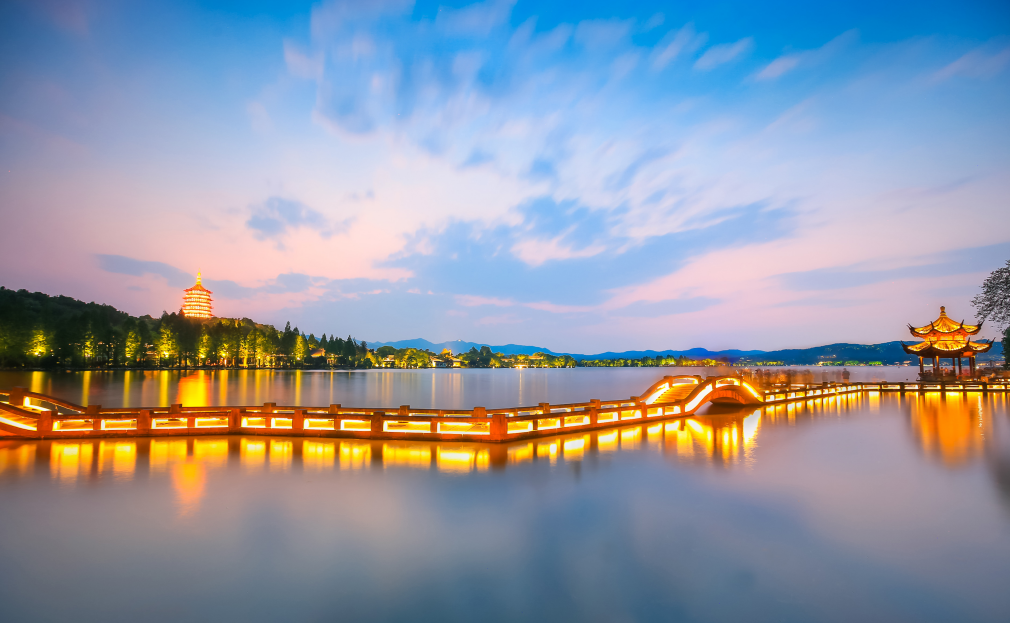Hangzhou, the capital of Zhejiang Province in eastern China, is a city where ancient heritage harmonizes with modern development. Nestled at the head of Hangzhou Bay, it is renowned for its picturesque West Lake, a UNESCO World Heritage Site celebrated for its temples, pagodas, and gardens. As one of China’s Seven Ancient Capitals, Hangzhou boasts a history of over 2,200 years, having served as the capital for the Southern Song dynasty during the 12th and 13th centuries. Today, it is a vibrant economic hub with significant contributions to the textile, electronics, and chemical industries. The city is also famous for its tea culture, particularly Longjing tea, adding to its allure as a top tourist destination.
Here are the top 10 Hangzhou Places to Visit, each accompanied by a detailed description, highlight, useful tips, and how to get there.
1. West Lake (Xi Hu)
West Lake is arguably the most famous attraction in Hangzhou and is a UNESCO World Heritage Site. Known for its picturesque beauty, it has inspired countless poets, painters, and garden designers since the 9th century. The lake is surrounded by historical pagodas, lush gardens, and hills, creating a serene environment that captivates visitors year-round.
Highlight:
One of the most stunning features of West Lake is the “Ten Scenes of West Lake,” which includes landmarks like Su Causeway, Broken Bridge, and Leifeng Pagoda. Each scene offers a unique perspective and seasonal beauty.
Useful Tips:
- Rent a bike to ride around the lake and cover more ground.
- Visit at dawn or dusk for the most beautiful light and fewer crowds.
- Consider taking a boat ride for a different perspective of the lake.
How to Get There:
West Lake is centrally located in Hangzhou and easily accessible by public transport. Multiple city buses serve the area. You can also take a taxi or use a bike-sharing service for more convenience.
2. Lingyin Temple
Lingyin Temple, also known as the Temple of the Soul’s Retreat, is one of the largest and wealthiest Buddhist temples in China. Founded in AD 328, it is located in a wooded area on the northwest side of West Lake. The temple complex consists of several halls and pagodas, each housing various Buddha statues and historical relics.
Highlight:
The Great Hall of the Great Sage is a must-see. It contains an impressive 33.6-meter-high statue of the Buddha, making it one of the tallest indoor Buddha statues in China.
Useful Tips:
- Wear comfortable walking shoes as the temple grounds are extensive.
- Be respectful and maintain silence in prayer halls.
- Visit early in the morning to avoid the large crowds.
How to Get There:
Lingyin Temple is around 10 km from the city center. You can take bus numbers 7, 807, or Y2 directly to the temple. Taxis are also readily available around the city and can take you directly to the temple entrance.
3. Meijiawu Tea Village
Meijiawu Tea Village is an idyllic tea plantation located in the western part of Hangzhou. The village is famous for producing Longjing (Dragon Well) tea, one of China’s most famous green teas. Visitors can explore the plantation, participate in tea-picking activities, and learn about traditional Chinese tea ceremonies.
Highlight:
The highlight of visiting Meijiawu is the hands-on experience of picking tea leaves and watching a Chinese tea ceremony. You can also taste freshly brewed Longjing tea, known for its delicate flavor and health benefits.
Useful Tips:
- Wear light clothing and a hat, especially in the summer months.
- Buy tea directly from local farmers for the freshest experience.
- Arrange for a guided tour to gain deeper insights into the tea-making process.
How to Get There:
Meijiawu is about 15 km from downtown Hangzhou. You can take buses 287 or Y4 to get there. Alternatively, taking a taxi or booking a private tour can provide a more comfortable journey.
4. Hefang Street
Hefang Street is a well-preserved piece of ancient Hangzhou, showcasing the architectural style and commercial activities of the Southern Song Dynasty. This pedestrian street is lined with shops selling tea, silk, handicrafts, and traditional Chinese medicine. Street performers and various food stalls add to the vibrant atmosphere.
Highlight:
Don’t miss the Hu Qing Yu Tang, a traditional pharmacy that has been operating since 1874. It now serves as both a functioning pharmacy and a museum showcasing traditional Chinese medicine.
Useful Tips:
- Visit in the evening when the street comes alive with lights and performances.
- Be prepared to haggle when buying souvenirs.
- Try local snacks such as Dragon Well tea-flavored cookies and crispy chicken.
How to Get There:
Hefang Street is located near West Lake and is accessible by many bus lines, including routes 8, 155, and 208. You can also borrow a public bike or walk if you’re staying nearby.
5. Xixi National Wetland Park
Xixi National Wetland Park is China’s first national wetland park, covering an area of about 11.5 square kilometers. This urban wetland is crisscrossed by six main watercourses, with numerous smaller ponds and lakes. It is home to diverse wildlife and offers boat rides, hiking, and bird-watching opportunities.
Highlight:
The highlight of Xixi is the unique boat tour that navigates through the wetlands, offering a close-up view of the lush greenery and wildlife. During the tour, you can visit traditional fishing villages and see ancient temples.
Useful Tips:
- Bring binoculars for bird watching.
- Wear comfortable waterproof shoes for the boat rides and trails.
- Visit during spring or autumn for the best weather and scenery.
How to Get There:
Xixi National Wetland Park is about 5 km from West Lake. You can take bus routes 310 or 346. Taxis and ride-sharing services are also a convenient option.
6. Longjing Tea Village
Longjing Tea Village is situated in the hills southwest of West Lake. It is famed for producing Longjing (Dragon Well) tea, considered one of the best green teas in China. The village offers a tranquil escape, where visitors can stroll through the tea fields, interact with local farmers, and enjoy fresh tea.
Highlight:
The highlight is the tea-tasting sessions where you can compare different grades of Longjing tea. The village is also home to the China National Tea Museum, which provides a thorough history of tea culture in China.
Useful Tips:
- Wear comfortable shoes for walking through the hilly terrain.
- Purchase tea from the local shops in the village for authenticity.
- Visit the China National Tea Museum for a comprehensive understanding of tea.
How to Get There:
Longjing Tea Village is about 5 km from the city center. Bus routes 27 and 87 go directly to the village. Alternatively, taxis and ride-sharing services are readily available.
7. China National Silk Museum
The China National Silk Museum, located near West Lake, is the largest silk museum in the world. It showcases the history and development of silk production and its cultural significance in China. The museum comprises several exhibition halls, each focusing on different aspects of silk, from ancient techniques to modern innovations.
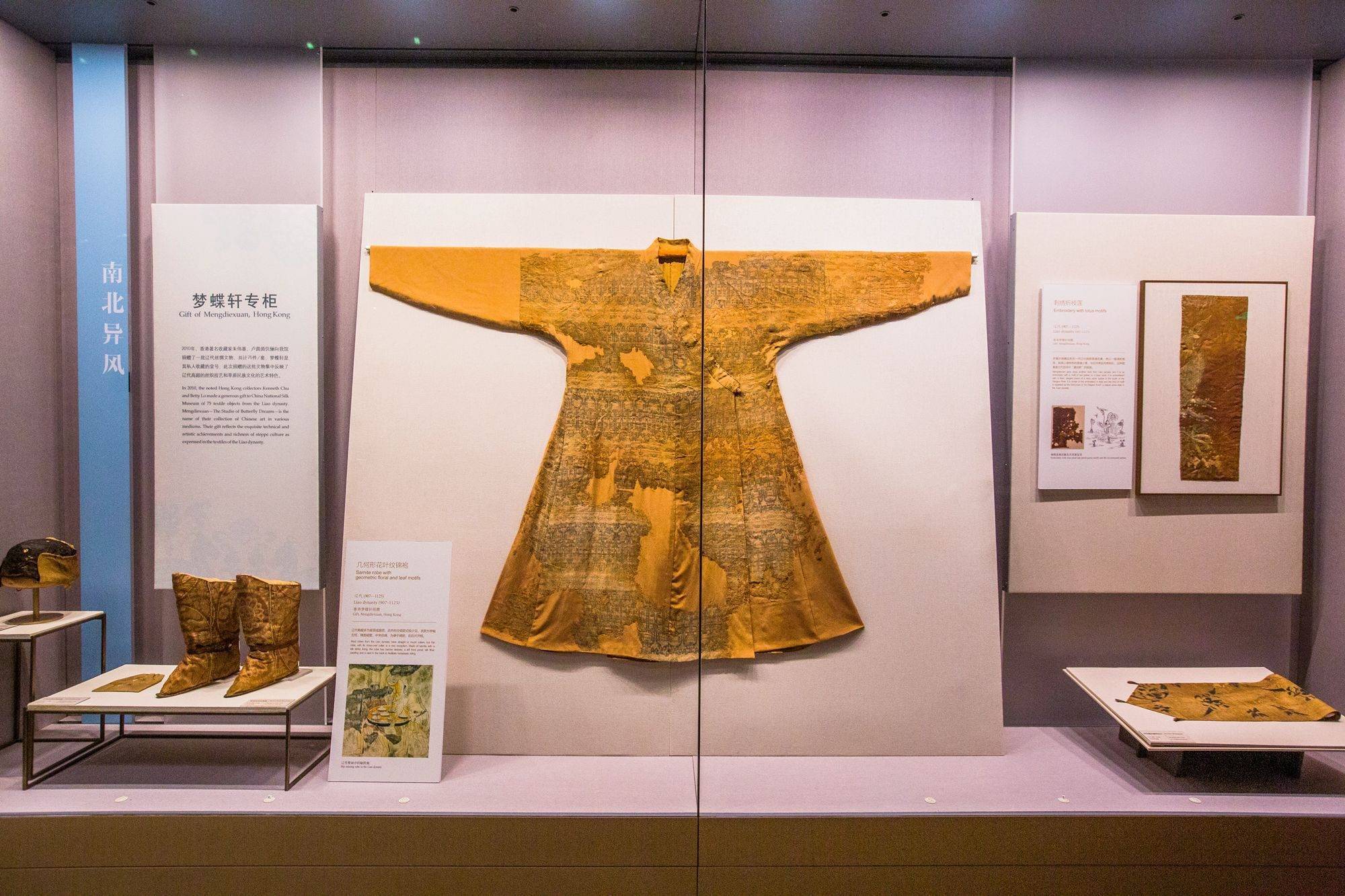
Highlight:
The highlight is the Silk Road Gallery, which illustrates the historical trade routes that connected China to the Western world. The interactive displays and multimedia presentations make this gallery particularly engaging.
Useful Tips:
- Check out the museum’s schedule for any special exhibitions or workshops.
- Visit the gift shop for quality silk products.
- Allocate at least two hours to thoroughly explore the museum.
How to Get There:
The museum is located on Yuhuangshan Road, about 4 km from the city center. Buses 12, 42, and 87 serve this area. Taxis are also a convenient option.
8. Liuhe Pagoda (Six Harmonies Pagoda)
Liuhe Pagoda, also known as the Six Harmonies Pagoda, is a historical pagoda located on the banks of the Qiantang River. Originally built in 970 AD during the Northern Song Dynasty, the pagoda was constructed to calm the tidal bore of the Qiantang River. It stands 60 meters tall and offers stunning views from its top.
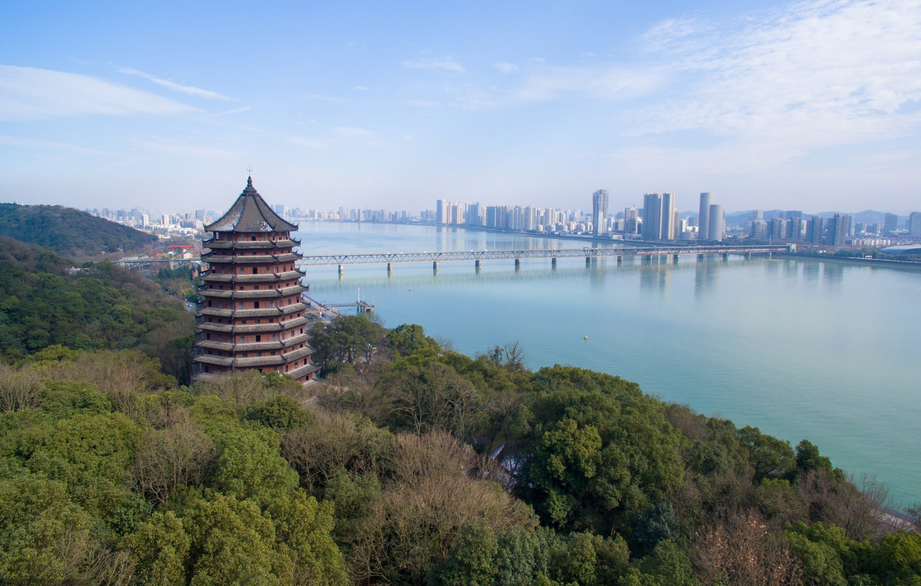
Highlight:
The highlight is the panoramic view from the top of the pagoda, which encompasses the Qiantang River, nearby bridges, and the surrounding countryside. The interior of the pagoda features intricate carvings and historical artifacts.
Useful Tips:
- Wear comfortable shoes for the climb to the top.
- Bring a camera for the panoramic view from the top.
- Visit the nearby Liuhe Museum to learn more about the pagoda’s history.
How to Get There:
Liuhe Pagoda is located about 8 km south of downtown Hangzhou. You can take bus routes 808, 318, or K4 to reach the pagoda. Taxis and ride-sharing services are also available.
9. Qinghefang Ancient Street
Qinghefang Ancient Street is one of the most famous and historic streets in Hangzhou. Reflecting the features of the Southern Song Dynasty, the street is a bustling area with shops selling traditional crafts, food, and souvenirs. It’s a great place to experience the cultural heritage of Hangzhou.
Highlight:
The highlight is the street’s vibrant atmosphere, which includes traditional Chinese opera performances, local eateries, and artisans crafting traditional items. Qinghefang Street is also home to several historic residences and ancient wells.
Useful Tips:
- Visit during weekdays to avoid the weekend crowd.
- Try local delicacies like Hangzhou-style dim sum and street snacks.
- Bargain at the shops for the best prices on souvenirs.
How to Get There:
Qinghefang Ancient Street is located in the Shangcheng District. It’s easily accessible by bus lines 8, 38, and 108. Walking or biking from nearby attractions like West Lake is also an option.
10.Hangzhou Songcheng
Hangzhou Songcheng is a prominent theme park located southwest of Hangzhou’s West Lake. It vividly recreates the culture and lifestyle of the Song Dynasty (960-1279), making it a fascinating destination for history enthusiasts and tourists alike. The park spans an impressive 0.2 square kilometers and consists of various sections, including the Reproduction Section of Riverside Scene at Qingming Festival, Nine-Dragon Square, Song Town Square, Immortal’s Palace on the Mountain, Southern Song Imperial Palace, and Southern Song Customs Garden.
The park offers an immersive experience where visitors can step back in time to the Song Dynasty. The architecture closely follows the methods of the era, adding to the authenticity. There are numerous attractions such as strange streets, Buddha Hill, Urban Street, and Songcheng River. Traditional handicraft workshops like porcelain workshops, wine shops, and local street food stalls enhance the cultural experience.
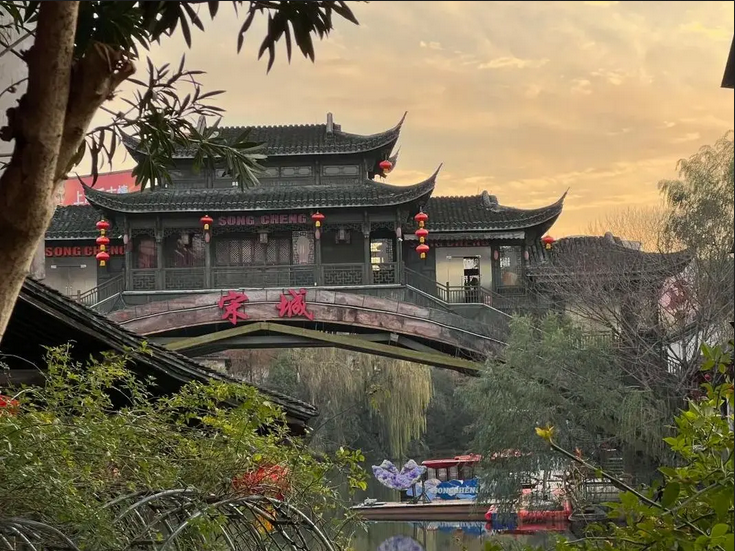
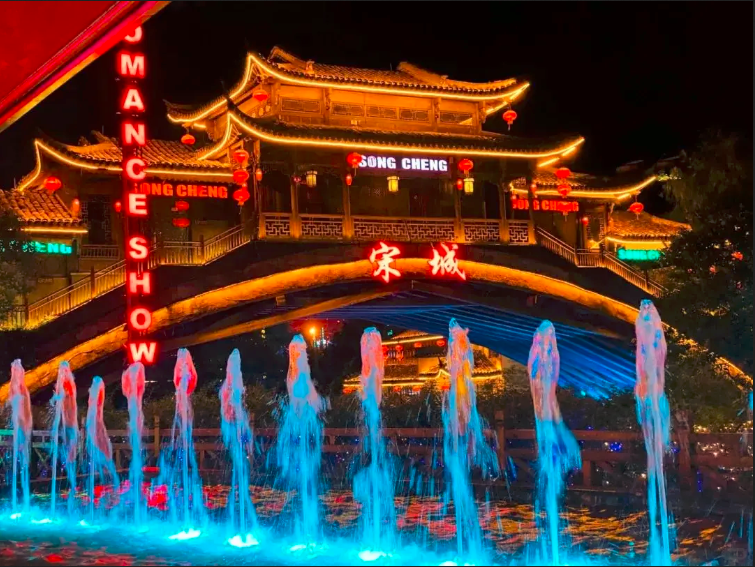
Highlights
-
Romance of Song Dynasty Show: This is a world-renowned performance, acclaimed as one of the top three shows globally alongside the “O” show in Las Vegas and Moulin Rouge in France. The show utilizes artistic forms of singing, dancing, and acrobatics to portray local legends and folklore, such as the Legend of the White Snake.
-
Cultural Activities: Visitors can engage with traditional culture through activities like ball-throwing games, folk dances, and demonstrations of traditional crafts. There are also reproductions of significant historical scenes like “Along the River During the Qingming Festival”.
-
Festivals and Events: Themed activities such as the New Year Temple Fair, Splashing Water Festival, Guozhuang Carnival, and Torch Festival are regularly celebrated, adding to the park’s vibrant atmosphere.
Useful Tips
- Best Time to Visit: The best months to visit are between March and October when the weather is pleasant. The park is open from 10:30 AM to 10:00 PM, with night entrances available from 6:00 PM.
- Recommended Duration: Plan to spend at least half a day to a full day to fully experience the multitude of performances and attractions.
- Tickets: The entrance fee starts at ¥320. Discounts are available during specific seasons and for group bookings.
- Amenities: There are numerous dining options within the park, ranging from street food to traditional restaurants, ensuring that visitors can enjoy local cuisine without leaving the park premises.
How to Get There
Getting to Hangzhou Songcheng is convenient. Visitors can take several bus lines, including No. 4, 121, 189, 190, 202, 287, 308, 318, 354, 439, or 1400, and get off at Songcheng Station. The park is located at No. 148, Zhijiang Road, Hangzhou City, making it accessible from various parts of the city.
For those traveling from other cities, Hangzhou Songcheng is about 200 kilometers west of Shanghai, which can be reached via high-speed trains or car. Additionally, private transfer services are available to provide a worry-free travel experience directly to the park.
